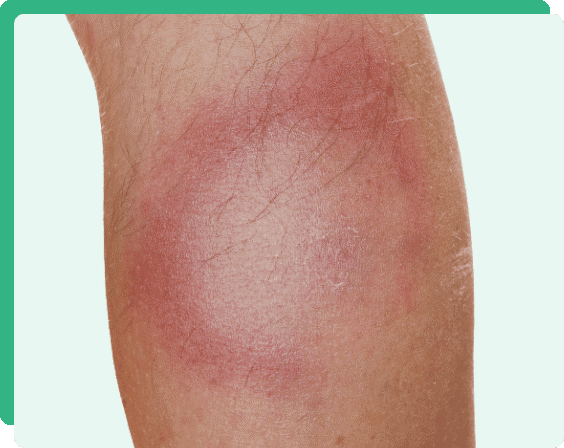Lyme Disease
regimen
At Medinstitute Nikolenko Clinic, we blend standard medical care with complementary and alternative therapy to manage and treat Lyme disease and other tick-borne illnesses. Our medical team, equipped with extensive clinical experience in treating tick-borne diseases, use a personalised diagnostic and treatment approach for patients who are experiencing even the most complex and severe symptoms.
Lyme Disease
cause and symptoms
Lyme disease is caused by the bacterium Borrelia burgdorferi and, rarely, Borrelia mayonii. It is transmitted to humans through the bite of infected blacklegged ticks (Ixodes scapularis).
Blacklegged ticks can occasionally transmit other diseases such as anaplasmosis, babesiosis, Borrelia miyamotoi disease, Powassan virus disease, and ehrlichiosis associated with Ehrlichia muris eauclarensis
According to the Centers for Disease Control and Prevention (CDC), typical Lyme disease symptoms include fever, headache, fatigue, and a characteristic skin rash called erythema migran. If left untreated, the infection can spread to joints, the heart, and the nervous system.
Lyme disease is diagnosed based on symptoms, the possibility of exposure to infected ticks and laboratory test results.
Most cases of Lyme disease can be treated successfully with a 2- to 4-week course of oral antibiotics.
A vaccine for Lyme disease is not currently available. Prevention includes insect repellent, removing ticks promptly, applying pesticides, and reducing the available size of the available tick habitat.

Tick-borne encephalitis and Lyme disease – Y&C Institute of Medical Rehabilitation Ltd.’s perspective, Cyprus.
These diseases occur when viruses or microorganisms enter the human body along with the “tick saliva” during a tick bite. The symptoms in all “bitten” individuals are very similar, whether it’s in Russia, Australia, or the USA, where the causative agent is a spirochete called Borrelia. It also has sisters belonging to the same group of spirochetes with almost identical symptoms, such as Bartonella, Babesia, and others. However, it is incredible but true that Lyme disease is not officially recognized in Australia, for example.
It often happens that due to a weakened immune system, a virus enters the body, which might be present somewhere but simply goes unnoticed. Since effective antiviral therapy is not currently available from pharmaceutical companies, symptoms depend on the extent of the body’s involvement and affect almost all organs and systems.
Usually, symptoms of central and peripheral nervous system involvement take the lead, including headache, spine pain, nerve pain in the limbs, abdominal and back muscles. Severe weakness, depression, loss of concentration, dizziness, digestive disorders, and other symptoms are also characteristic. The condition worsens with each passing year, leading to loss of ability to work and premature death.
The classical treatment involves the use of antibiotics, which provide temporary relief to patients (no one even mentions the virus since there is no treatment available for it yet).
In our medical center, we have adopted a relatively new and effective method combining high doses of intravenous ozone with intravenous laser irradiation. The results have exceeded expectations, with significant improvement in the patients’ condition, reduction or absence of pain in some areas, and an increase in strength in the limbs and back (measured with a dynamometer) up to a 50% increase without any training. Blood tests show the complete absence of Borrelia.
We can say that the results are good after one month of treatment. Subsequently, rehabilitation of the affected areas of the body needs to be done locally, following the
doctor’s recommendations. Since the disease-causing agent is destroyed by ozone and laser, the restoration phase of the body should begin. A crucial role in the rehabilitation of the body affected by these diseases is played by maintaining high levels of blood oxygen (not less than 95-96). This can be achieved using specialized equipment like ozone water ozonators, liquid oxygen, etc.
Rehabilitation involves therapeutic exercises, physiotherapy, dietary and sleep regimens, as well as compliance with all the prescribing doctor’s instructions. This includes taking B-group vitamins, multivitamins, medications to normalize the gastrointestinal tract (enzymes, probiotics, colon-cleansing agents), as almost all patients experience gastrointestinal issues due to the disease’s impact on the nervous system of the intestines, resulting in constipation and spasms. Treatment for this should be individualized, and the goal is for the patient to have at least one bowel movement per day.
From exercises that promote intestinal motility to medicinal preparations and enemas, patients who have experienced this disease should know that the recovery period lasts up to three years or more.
Be healthy!
